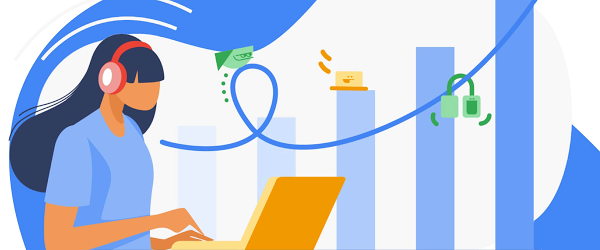Editor’s note: This article has originally been published on our German blog.
Imagine you’ve done your due diligence for your upcoming trip to the local authority office. You’ve filled out the relevant forms, booked the appointment, found the correct points of contact. But, as much as you’ve prepared, there’s one aspect of your visit you can’t control: you and the clerks don’t speak the same language.
In science-fiction, this wouldn’t be a problem. Star Trek has the universal translator. In Douglas Adams’ novel The Hitchhiker’s Guide to the Galaxy, there’s the telepathic Babel Fish, which enables everyone to understand everyone.
Here at Google Cloud, we’ve turned these future visions into reality. Without the need for telepathy or sci-fi, we use AI-powered translation technology. With smart translations, done almost in real-time, we’ve created a new, more agile way of communicating. In our webinar How Google Cloud’s AI-based translation technology drives innovation and overcomes language barriers, we’ll introduce you to our AI solution that will make multilingual interactions in public administrations easier than ever before. We’ll show you a simple translation app we’ve created for a common use case, and explain how you can use this solution in the day-to-day work of public officialdom to overcome language barriers.
Creating equal opportunities with AI
Here at Google, we’ve been pursuing our mission of organizing the world’s information and making it universally accessible and useful for more than 20 years. In the world we’re helping to create, language barriers will be a thing of the past. Fairness and respect take center stage in our vision of communication. That’s why our AI-enabled communication technology is tailored to use cases where language barriers currently put some at a disadvantage. We’ve made these technologies as user-friendly as possible to help administrative bodies easily integrate them.
From optimizing the models to point-and-click data science with AutoML, our fully managed end-to-end AI platform is suitable for users of all proficiency levels. It consists of three fundamental components:
Prebuilt APIs: With our prebuilt APIs, continuously refined by us, you don’t need training data to get going. They’re available for image, video, language, conversational, and structured data.
Custom AI with AutoML: With AutoML, you can develop first-class AI models without writing a single line of code.
End-to-end AI with core tools: With your developers and our core tools, you can create fully customizable AI models tailored to your needs. We’ll support you every step of the way, from choosing the right cloud infrastructure to your solution’s implementation.
Spotlight: Cloud technology and data protection
Meeting EU data protection requirements is a top priority for us, as well as our customers. Our maxim has always been your data belongs to you – and no one else. Your data is fully protected, and encrypted during both storage and transport. We have our data protection measures audited regularly too according to international norms and standards, such as ISO 27018 and BSI C5:2020. You can find out more about our security model here.
To illustrate the power of our intuitive and secure AI solution, we’ll explain in the webinar how public administrations can use our application to communicate with citizens in their preferred languages and remove barriers in oral and written communication. The webinar is conducted by Dominik Steiner, Sales Engineer, Public Sector at Google Cloud: “I have two children who grow up bilingual, so I know the issue of language barriers very well,” explains Steiner.
A multinational trip to the authorities
Language barriers are not uncommon. In our multinational world, there’s more than one official language, and our AI-powered translation technology helps meet the needs of increasingly international populations. In the live demo, we’ll walk you through a multilingual trip to the authorities, for which we used our Google Cloud AI platform to build a simple tool that directly translates verbal speech to facilitate communication between multiple parties. For some agencies, this can be a legal requirement. According to the Online Access Act, for example, EU-wide eIDAS trust services need to be clear and accessible to all EU citizens.
To make it work, we use a simple architecture based on App Engine, Cloud Storage, Cloud Logging, and Identity-Aware Proxies. Each request, meaning a voice recording in any given language, is forwarded to App Engine via an Identity-Aware Proxy. Meanwhile, the recording is transferred to Cloud Storage, and Cloud Logging is involved for traceability. Next, the APIs Speech-to-Text, Cloud Translation, and Text-to-Speech do their thing. Speech-to-Text converts the voice recording into text, which is translated into any number of languages by Cloud Translation, and then turned back into speech. Together, the three APIs help all speakers communicate with each other in their preferred languages.
In practice, this solution enables conversations in any number of languages, which are fully customizable. This technology is particularly helpful for public administrations, state or federal agencies, or migration offices. You can tailor the app’s user interface according to your corporate guidelines and integrate it on your website or into tools, such as AI-powered chat or phone bots.
Once you’ve signed up for the webinar, you’ll be able to access a range of interesting webinar recordings, whitepapers, videos, articles, and offers from our Google Cloud partners.
Cloud BlogRead More


